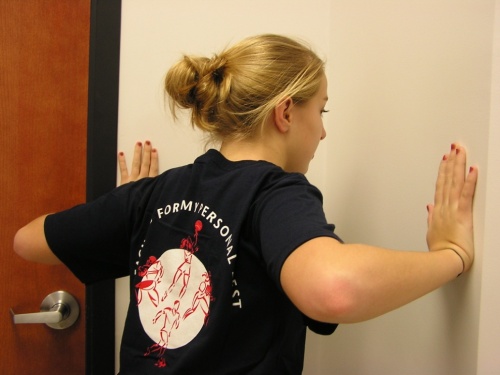Swimming with a SICK Scapula (Shoulder Blade)
Most swimmers know a thing or two about the rotator cuff – the four small muscles that attach the shoulder blade (scapula) to the arm and rotate the shoulder. They are the pesky culprits that often cause shoulder pain in swimmers, such as rotator cuff impingement and tendonitis. However, there is often another factor in shoulder pain in swimmers that can cause or compound rotator cuff injury: scapular somatic dysfunction, commonly known as a “SICK scapula” (SICK stands for a much longer medical name).
The shoulder joint and scapula work and move together to perform the overhead motions that occur in swimming. To perform the overhead motions in swimming correctly, swimmers need a lot of shoulder mobility and stability. Luckily, the joints at the shoulder are inherently mobile. The scapula is very mobile – unlike most bones which have many ligaments to hold it in place, the muscles of the mid back are mostly responsible for keeping the scapula in the right position.
The stability of the scapula-thoracic (ribcage) joint depends on how effectively the stabilizing muscles work together. If any of these muscles are not functioning normally, pain and injury can occur. A SICK scapula is a shoulder blade that sits in an improper position on the rib cage; usually it’s lower, rotated and more prominent (the bone sticks out more) than the unaffected side. Swimmers with a SICK scapula will often have pain in the front of the shoulder, tightness of the muscles on the front and back of the shoulder, weakness of the muscles in the middle of the back, and altered movement patterns of the scapula when the shoulder is moved.
Shoulder Injuries
Access additional causes, symptoms and treatment information.
A SICK scapula puts stress on the moving (muscles) and non-moving (tendons, cartilage) parts of the shoulder which prevents proper mechanics and often leads to injury. Swimming, unlike other overhead sports such as tennis and baseball, does not require the shoulder to produce high acceleration and deceleration forces. The repetitive overhead motions from swimming lap after lap cause the rotator cuff and other stabilizer muscles to fatigue. This places enough stress on the shoulder to cause similar injuries as those other overhead activities.
So what can we do about it?
Like most musculoskeletal problems, a SICK scapula can often be prevented or corrected with stretching and strengthening exercises. Stretching tight muscles like the lats, rotator cuff, and pec minor helps the scapula stay in a less rotated position. The sleeper and corner stretches address these muscles. Additionally, strengthening the weak muscles like the rotator cuff and mid back muscles keeps the scapula from rolling forward on the ribcage.
An easy way to stretch and strengthen these muscles is to maintain good posture. Posture is very important when trying to correct a SICK scapula. Even if you do the right corrective exercises, continuing to have poor posture may delay or prevent correction of the problem. Try this: stand with your back against a wall. The head, shoulders, hips and feet should be touching the wall. Many swimmers have trouble getting their heads and shoulders back to touch the wall because of their posture. Now try walking away from the wall for a few minutes and try to hold good posture. Then go back to the wall and see how you did. Focusing on good posture throughout the day will help increase the strength of the muscles that help keep the scapula in the correct position and thus prevent or help a SICK scapula.

Above: Sleeper Stretch

Above: Corner Stretch
Consult your primary care physician for more serious injuries that do not respond to basic first aid. As an added resource, the staff at Nationwide Children’s Hospital Sports Medicine is available to diagnose and treat sports-related injuries for youth or adolescent athletes. Services are available in multiple locations. To make an appointment, call (614) 355-6000 or schedule an appointment online.
